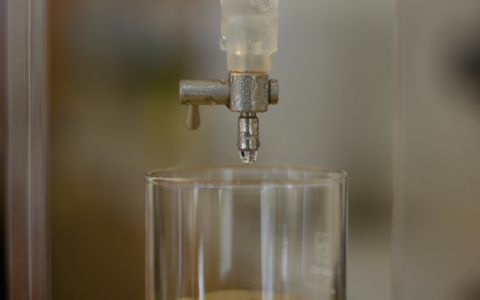Scientists warn that pollution in Prague, a chronic problem, is worse than ever — thanks to a 30 percent increase in traffic since last year and ongoing construction throughout the capital.
In Prague 5, doctors are noticing more cases of immune deficiencies among children and decreased fertility levels among men, trends that make some suspect pollution is to blame.
It's enough to have City Hall now promising action. Starting next year, officials say, the city will allocate more money — though they're not saying how much — to clean Prague's air.
"It's getting worse every year," says Radim Šrám, head of the Genetic Ecotoxicology Department (GED) at the Institute of Experimental Medicine in Prague. "What's most disturbing is the dramatic increase in the concentration of fine dust particles."
Arnika, a nongovernmental organization, has just published a report that identifies the country's biggest polluters in various categories for 2005, and there's a special list of Prague offenders.
Topping the city list for toxic chemicals is Pražské služby, a.s., which runs an incinerator in Prague 10 Malešice. The facility emitted 16,159 kilograms (35,550 pounds) of toxic chemicals into the air last year. For greenhouse gases, the leader is ťeskomoravský cement, a.s., a plant in Prague 5 that emitted a little more than 505 million kilograms of the gases in 2005. Pražská teplárenská, which has a heating plant in Malešice, released 2.7 million kilograms of toxic gases last year, making it the leader in emitting gases that cause acid rain.
Karolína Šelová, spokeswoman for the Environmental Ministry, says any company included in Arnika's report is exceeding legal emission limits — though limits differ from company to company.
The ministry says the companies will face variable fines, which can either come from regional offices or the Czech Environmental Inspection agency.
"No company wants to be known as the biggest polluter," says Jindřich Petrlík, Arnika's director. "Our hope is that, by publishing this information, we will motivate the companies to do something about it."
Pražské služby and Pražská teplárenská were unavailable for comment.
Jiřina Štěpánková, a children's doctor working in Prague 5, says cases of allergies have shot up among children. "One in four children that come to see me has allergies now," she says. "And, of course, pollution is largely responsible."
| Top Offenders | |
| Nationwide | Prague |
| ČEZ, a.s. Mittal Steel Ostrava, a.s. Třinecké železárny, a.s. International Power Opatovice DEZA, a.s. |
Pražské služby, a.s., Prague 10 Českomoravský cement, a.s., Prague 5 Pražská teplárenská, a.s., Prague 10 Pražské vodovody a kanalizace, a.s., Prague 6 Simix Praha, s.r.o., Prague 4 |
| Source: www.arnika.org | |
Doctors say air pollution can also affect adults, leading to decreased fertility in men and women bearing children with lower birth weights.
"The environment certainly plays an important role in the development of the fetus," says Tomáš Řádek, a gynecologist in Prague 4.
Ivo Procházka, a physician at Charles University, says there is a direct link between pollution and sperm count. "Of course, it's difficult to say how big the role is," Procházka says. "But, generally, in places with increased pollution, men's fertility rate tends to be lower."
Because many of the toxins are carcinogenic, increased cases of cancer are another problem, according to Petrlík.
The Institute of Health Information and Statistics of the Czech Republic reports that there were 8,400 cancer cases in Prague in 2003, the most recent year for which data was available. That's nearly a 10 percent increase from 1999.
While toxic emissions from companies like Pražská teplárenská contribute to Prague's pollution, Petrlík says that the biggest source of air pollution continues to be car traffic.
GED testing shows that between 2001 and 2005 the concentration of dust particles increased 20 percent. Fine dust particles, which mostly come from car exhaust fumes, are the most dangerous because they are inhaled the deepest, Šrám says.
Moreover, rising gas prices have prompted many people to revert to burning coal and wood, which does a lot to decrease air quality in winter.
Petrlík says that, although factories contribute less to air pollution than car traffic, companies like the incinerator facility in Malešice can be a significant threat to their immediate environment. The Malešice facility, he says, releases a high concentration of nitric oxide, a carcinogen.
One of the ways the city tries to reduce dust particles in the air is by spraying the streets with water.
But that is not dealing with the problem head on.
"The only solution for that is to finish building the highway bypass that will divert traffic away from Prague," says City Hall spokesman Jiří Wolf.
But no one is able to say when that will happen.
It would help to introduce stricter technical inspections of cars and trucks, Šrám says. Prague not only has one of the highest concentrations of cars in Europe, but automobiles here tend to be older than those in Western Europe. And it's the old cars and diesel-guzzling trucks that do the most damage.
By This email address is being protected from spambots. You need JavaScript enabled to view it.







